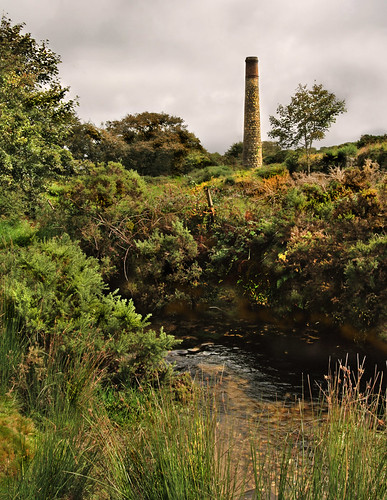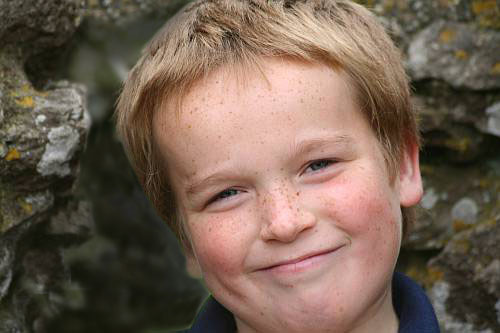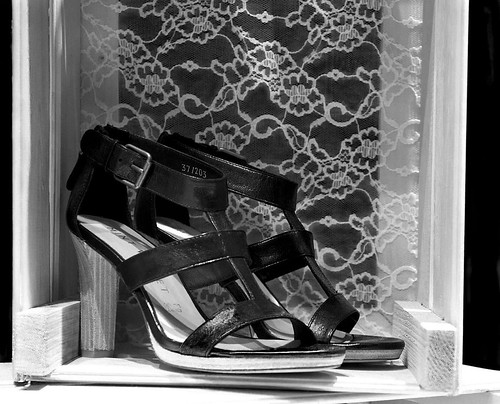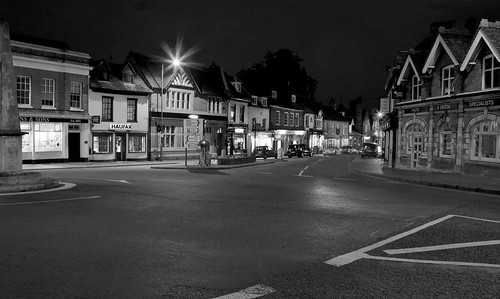
• Lonely Bodmin Chimney •
Click image to view large
• Lonely Bodmin Chimney • By Netkonnexion on Flickr ![]()
The influence of man on the countryside is worth photographing.
For centuries we’ve created substantial buildings in open country. Today, these have become an intimate part of the rural scene. For photographers they provide an interesting focus for landscapes. Sometimes quaint, sometimes aesthetically pleasing, these old relics can provide great interest for the eye. They draw the viewer into the scene and provide a starting point for the appreciation of the rest of the image.
Finding ruins and old buildings
In the UK the Ordinance Survey ![]() sell maps that carry a key which marks out old, derelict and protected buildings. Other countries have similar mapping systems. Surprisingly some online mapping systems are not so good at highlighting these features of our history. Unless, that is, they are part of some sort of commercial or historic leisure opportunity on the site.
sell maps that carry a key which marks out old, derelict and protected buildings. Other countries have similar mapping systems. Surprisingly some online mapping systems are not so good at highlighting these features of our history. Unless, that is, they are part of some sort of commercial or historic leisure opportunity on the site.
I was crossing Bodmin Moor in the West Country, UK, one day and came across the chimney above in a tiny country lane. Well off the beaten track. Bodmin Moor, with many other places in Cornwall and Devon, was once a thriving mining area. The locals extracted tin. Sadly the workings bring little prosperity to either county now. But many of the old mine buildings, and especially the distinctive chimneys, bring many tourists. In the parks and moors these mines are preserved and they provide brilliant photographic opportunities. The ones that are away from the crowds are best. A lonely feature in a landscape is always more attractive than a solitary chimney surrounded by heavily trodden ground, tourists and coaches.
So how do you find these hidden gems? Here are some things you can do…
- At walkers/backpackers shops ask the staff. They often know local interest spots.
- Get to know some local people in places you stay.
- Tourist information offices are found world wide and often know of hidden places.
- Study maps and aerial views of places you are going to visit.
- Ask in local camera shops.
- Contact the local camera club to your destination before your trip.
- Search out ‘interest’ booklets written by local people for local people – often found in walkers/backpackers shops
- Contact historical and walkers societies in advance of your trip
How should you photograph ruins?
There are some basics you should think about…
Use perspective to exaggerate depth: Find a long wall or fence, even ancient pathways/hedges to shoot along and use these to create perspectives and lines to draw the eye into the picture and create depth.
Rule of thirds: In the picture above the chimney is on a third. The rule of thirds always helps with a more dynamic placement of solid objects in the landscape.
Foreground, mid-ground, distance: These help create layers in the picture. Picture something close to you as detailed and tail off the detail on the other side of some breakpoint in the image. My little steam in the foreground (above) not only provides detail, but acts to break up the picture into fore and mid-ground too. Nearer the horizon the chimney provides interest drawing in the eye and creating depth.

• Rock backdrop •
The textures on the sites of ruins are often great for portraits
Detail and texture: Some great things can be found around ruins, derelict buildings, mines and old industrial sites. Think of old spillways, waterways, old machinery, the wonderful textures, rocks, farm animals, heaps of mine spoils, rust, old beams of wood… the list is endless. They all provide great photographic opportunities.
People! ruins and derelict sites make great places for portraits. The textures and variations of the scene both make great backdrops. Look for surfaces that have high contrast. Lots of mid-tone highlights and darks mixed so that the texture stands out. If the light is no good then you can side light with an off-camera flash to exaggerate the texture in the rocks.
Light painting: There are some brilliant opportunities for lighting up these sorts of places fat night with all sorts of exotic lights, colours and fun light painting shots. You can find out more about light painting in this post: Night photography – let the sparks fly!. Be mindful of your safety – some of these places are dangerous and make sure you get any permissions you need before invading a site with bizarre night lights. Someone may object, especially on private ground.
Opportunities
Ruins and the like provide great opportunities for landscapes, portraits, studies in texture and fun shots. Be on the look out for local situations for you to get to know and plan ahead for when you are away.
 Photokonnexion tips by email
Photokonnexion tips by emailIf you enjoyed this article please sign up for our
daily email service.
Find out more…
Photokonnexion Photographic Glossary – Definitions and articles.
Composition resources on Photokonnexion
Ordinance Survey
perspective Simple ideas about perspective in photography
Tule of thirds
The easy way to give depth to landscapes
Night photography – let the sparks fly!
Off-camera flash



